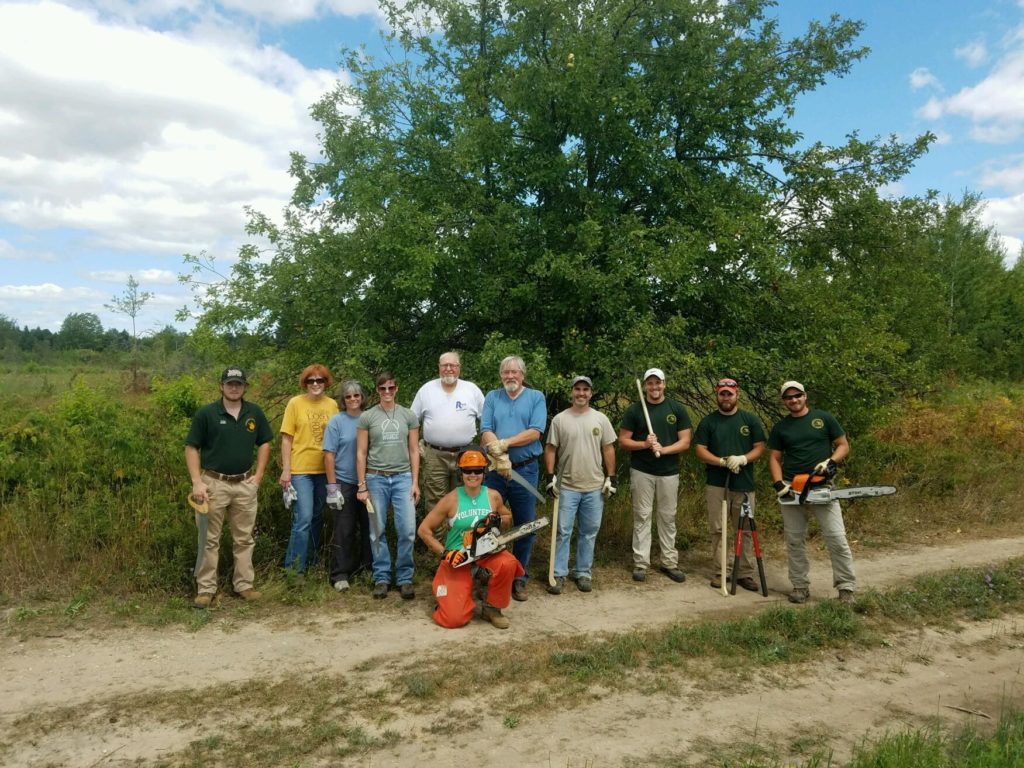
MUCC AND THE NWTF IMPROVE HABITAT IN THE GRAYLING STATE FOREST
This past weekend, volunteers with MUCC’s Wildlife Habitat Program collaborated with the Northern Lower Peninsula region’s National Wild Turkey Federation Biologist (NWTF), Ryan Boyer, to improve wildlife habitat in the Grayling State Forest. This project is part of a larger Wildlife Habitat Grant partnership involving NWTF, the Ruffed Grouse Society (RGS), Whitetails Unlimited, and Michigan Department of Natural Resources (MDNR). Volunteers spent the day pruning dead branches from apple trees at the King Orchard to improve soft mast production for the areas whitetail deer along with other game species. The project location was chosen by the area’s DNR Wildlife Biologist, Brian Piccolo and MDNR Wildlife Technician, Tim Riley. The group of MDNR staff alongside seven volunteers improved soft mast production for wildlife by pruning dead branches from various apple trees covering well over half of the 40-acre orchard.
Most of the volunteers were local to the Grayling State Forest area including the Michigan Sharp-tailed Grouse Association president, David Markle. Dedicated volunteers Walter Gumtow and his cousin, Denise Lange, from the Lewiston and Gaylord areas improved wildlife habitat yet again. Also from the Gaylord area, my mother, Susan Topp made a great brush dragging partner as we had to remove the dead branched from the “drip-line” of the apple trees. Bethy Williams, who has volunteered at almost all 12 of this year’s OTG projects so far, operated a chainsaw to cut the larger branches for us to drag away and access the remaining small branches easily.

Thank you to our volunteers, to the local MDNR staff, and to the local NWTF chapter for collaborating with MUCC’s Wildlife Habitat Program to make this project possible. This was the second habitat project MUCC hosted in the Grayling State Forest this year; a project was completed in January to restore snowshoe hare habitat by providing horizontal cover using balsam fir and black spruce. As this was just one of over twenty wildlife habitat improvement projects to be completed this year in various regions of the state, there are plenty more opportunities to volunteer coming up!
This weekend, volunteers will be cutting black locust trees and building brush piles for rabbitat in the Barry State Game Area. Next weekend on Saturday, August 20th at 9am volunteers will be meeting at Allegan State Game Area’s Fennville Farm Unit to remove fencing from and area and build large brush piles on the field edges- see more details and RSVP to volunteer at Allegan SGA here. In the U.P. Region, a large group of volunteers will be improving habitat at a GEMS area in the Shingleton State Forest near Manistique, MI- see details and RSVP to volunteer here. On Saturday, September 10th, volunteers will be improving wildlife habitat in the Traverse City State Forest for the first time- see more details and RSVP here to volunteer at the Petobego State Game Area. Keep up to date with upcoming projects here!






